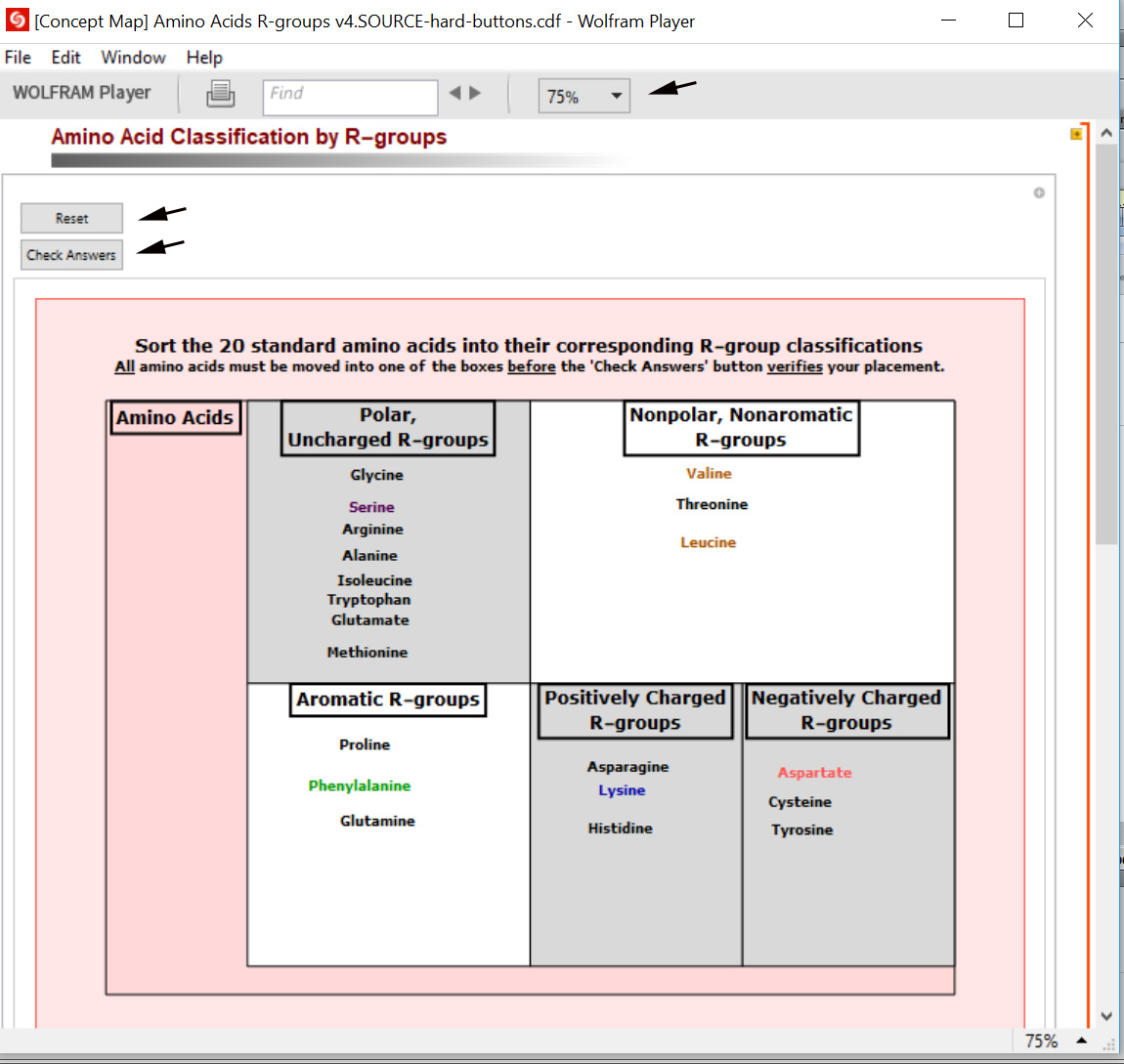| Download and install the CDF Player: If the latest version of the Wolfram Mathematica Computable Document Format or CDF player is not already installed on your computer, CLICK HERE to download the CDF Player installation file, install it, and then configure your computer to open "*.CDF" files by default with the Player. For example, the image shows how to select the default app setting in Windows 10. Download and open the CDF activity file: Download the following CDF activity file into a folder you can easily find - [Concept Map] Amino Acids R-groups v5.SOURCE-hard-buttons.cdf - and open it with the stand-alone CDF Player. Match the standard AA sidechain R-groups according their expected chemical and physical properties: Start the activity by using the mouse pointer to drag ALL 20 of the amino acid names listed on the left into labeled property boxes on the right that best describe the chemical and/or physical protperies of the dominant microstates of the AA sidechain R-groups in an aqueous equilibrium solution at pH = 7.0. |
 |
Activity assessment: After ALL 20 of the property boxes are populated with letters, check your matches by CLICKING on the 'Check Answers' button. As illustrated in the static screen capture below, the font colors change from black to one of the following font colors if the properties of the dominant AA sidechain R-group microstates at pH = 7.0 are correctly matched: polar uncharged, nonpolar, polar uncharged aromatic, positively charged, or negatively charged. An example is illustrated by the static image below, which is a screen capture made at the end of the excerise. |
|
| Continue or restart: You can continue shuffling AAs in and out of the boxes and rechecking your new matches at any time IF all of the amino acids are positioned in one of the property boxes. You can also CLICK the 'Reset' button to start the exercise all over again but starting with a different randomized order of AAs listed. |
|
 Nicholas Clayton and Duane W. Sears (c) 2011, University of California Santa Barbara. |
|